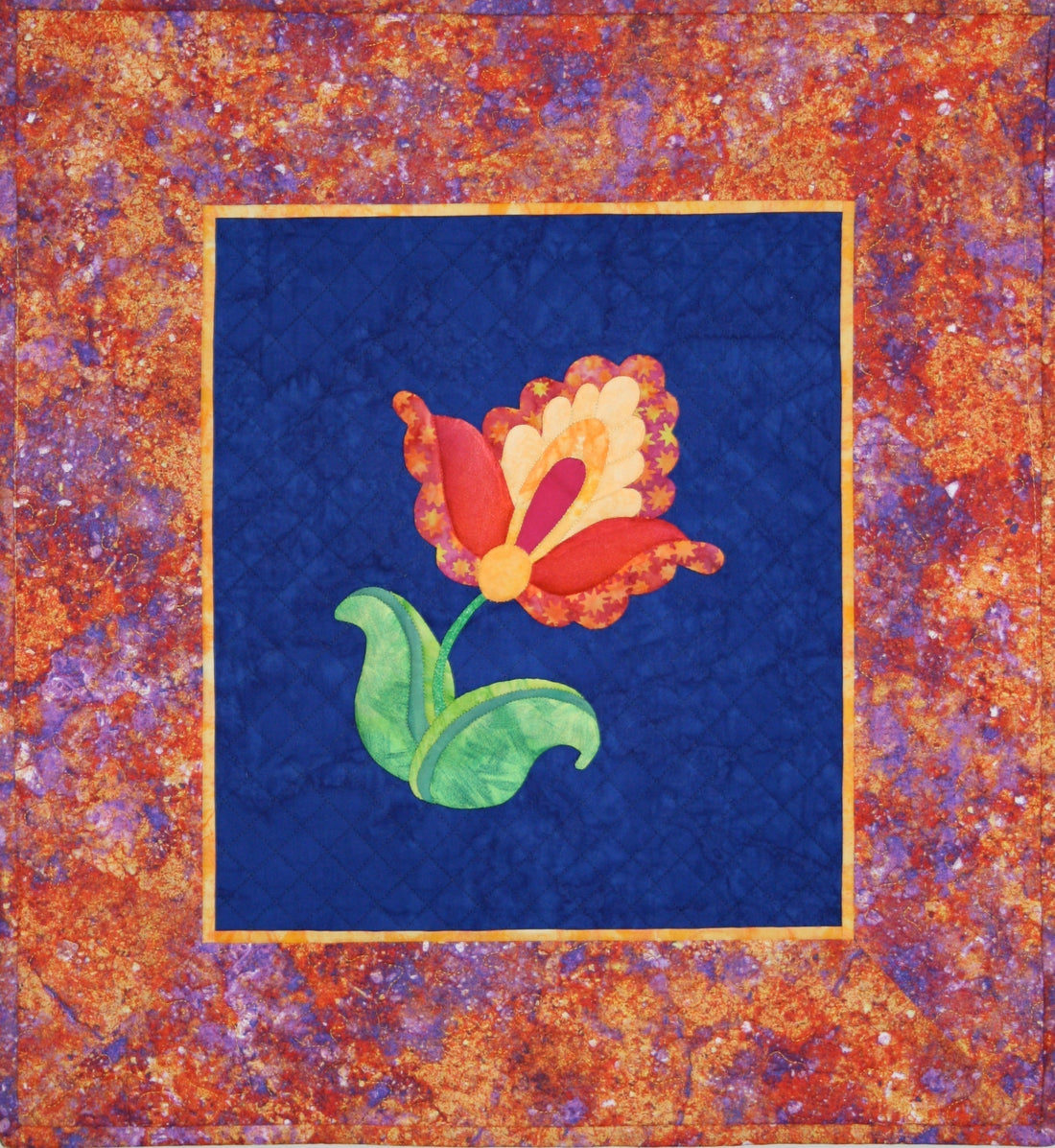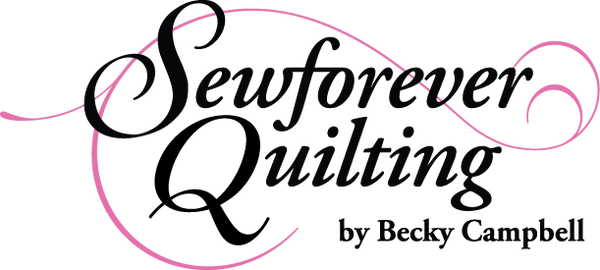
What is Innovative Appliqué?
Share
Hello,
My first blog post was about why I designed Sewforever Quilt Storage.
The short answer is I want you to have a safe way to store your quilts.

So what does Innovative Appliqué have to do with that?
Innovative Appliqué was my next innovation- the inspiration for the name.
I fell in love with a set of patterns for round seasonal table toppers.
I did not know how to appliqué and I wanted it to be turned edge appliqué.

Christmas appliqué table round. Pattern by Bee Creative, no longer in print.

Fall appliqué table round. Pattern by Bee Creative, no longer in print.

Summer appliqué table round. Pattern by Bee Creative no longer in print.

Spring appliqué table round. Pattern by Bee Creative, no longer in print.

Close up of the summer appliqué table round.
I needed to learn turned edge appliqué.
I took a number of appliqué classes. My results left a lot to be desired.
There were all kinds of things that slowed me down.
Needle turn was going to take a long time to master.
Freezer paper offered the best control over fabric shapes, but the tiny iron method was dangerous. Cutting freezer paper out of the back of my work was an accident waiting to happen.
I laid awake at night thinking of ways to work around those tasks.
Why trace, when we can copy and print?
Why iron freezer paper to the wrong side of fabric, stitch it down, then cut it out.
I will spare you more whys and show you the techniques I developed to eliminate those whys.
Innovative Appliqué developed from my night time wondering.
I want you to feel confident and enjoy turned edge appliqué.
Don't gasp, deep breath, it is possible.
Even experienced quilters say these techniques improve their progress.

Let's create a placement guide.
No need to trace a vinyl placement guide.
Place a sheet of Perfect Piecing in the copier's paper tray.
Place your pattern on the copier and press print.
You just created placement guide.
If your pattern is larger than 8-1/2" x 11", copy and print in sections.

Let's create appliqué templates.
Lay a sheet of heavy weight freezer paper in your copier's paper tray.
Place your pattern on the copier and press print.
Instant templates, no tracing.
My patterns are designed with Pattern A (overlay) Pattern B (templates).
I separate the shapes, number them in the order they go down on the right side of the background fabric and mark dash lines in areas that lay under another shape.
That does not mean you have to use only my patterns, although I would love that.
How to make your pattern copy friendly:
For the overlay simply copy your pattern to Perfect Piecing.
For the freezer paper templates, you will need to number and mark the dashes. Determine what shapes lay under another shape, dash those areas on your pattern. Make a copy of your dashed pattern to a freezer paper sheet.
You may need to make an extra copy of the freezer paper shapes.
Most patterns do not come with the shapes separated, you may cut though some shapes to get to other shapes.
Freezer paper sheets are inexpensive. Heavier weight than off the roll in your kitchen, no wrestling to get the freezer paper to lay flat and better sticking power when ironed to the fabric. 25 sheets for around $12ish.

Cut the freezer paper shapes out on the solid lines, exception-the dashed areas. Dashed areas lay under another shape.
Leave extra freezer paper to remind you to trim extra fabric.

Iron the freezer paper templates to the right side of your fabric.
That is how we avoid cutting freezer paper out of the back.

Trim a 3/16" turn allowance. That sounds technical, it is not, 4/16" is a 1/4".
You want it to be a bit less than a 1/4" to make it easier turning the cut edge down.
At the dashed lines trim extra fabric in those areas, 1/4"- 1/2".
It is not necessary to actually measure, it is an estimated guide.

These scissors are the bomb.
Most people trim small shapes with tiny scissors resulting in a choppy cut.
I trim out the fabric shapes with the purple scissors.
They have one serrated blade that pulls the fabric to your cut vs pushing it away.
So you are cutting exactly where you intended.
The serrated blade also helps keep the fabric cut from fraying.
Plus the handle design does not fatigue your hands.

Roxanne"s Glue Baste-It is a water soluble glue (it washes out).
It tacks faster than any glue I have tested. I do not want to wait for the glue to take hold and slow me down. I can not out turn this glue and I can turn pretty fast.
The ergonomic bottle design eliminates hand fatigue and makes it easy to apply just the right amount of glue.
This glue has been on the market for years. If you have the old bottle that continually clogged, this new design eliminates that problem. You can refill this bottle with your previous purchase by carefully removing the pink part and refilling. Although you will use so little glue it will take a long time to use up this bottle.
 You have trimmed the fabric shape, now apply a thin line of glue.
You have trimmed the fabric shape, now apply a thin line of glue.
This line looks pretty thick, the picture is magnified, think half that.
The best turning tool I have found is a Clover seam ripper.
It has a flat side that aids in turning the fabric down.
The freezer paper (see it peeking out) is on the right side of your fabric, holding the fabric shape and only the cut edge will turn down.
Most people hold the seam ripper down low and try to scope the fabric over.
Work from above. Hold the seam ripper like a pencil and pull the cut edge towards the glue.
Pull the cut edge over with the Clover seam ripper and press in place with your finger. Pull and press, working your way around the shape.
Do not turn dashed areas. Those are get out of jail free, no need to turn or stitch.

The tool on top is an awl, normally used in appliqué.
The long pointed part is round and tends to slip off when pulling the fabric over.
It is good for holding a point in place but not so much for turning.
The tool below is a seam ripper, as you know. I call out this particular seam ripper because it ergonomically fits in my hand. Are you sensing a theme. At my age or any age, the more comfortable you can work the more enjoyable.

Recognize this?
It is a Perfect Piecing placement guide printed from whatever pattern you are using. Pin it to the right side of your background fabric, as pictured. You want it to open like a book, which only requires two pins on the left side.
Apply a little Roxanne's glue to the wrong side of the turned edge shape.
Slide the shape under the placement guide, position and finger pressing in place.
Drum roll.
Now carefully pull the freezer paper off the shape you just glued and finger pressed to the right side of your background fabric.
No cutting freezer paper out of the back of your work.
Do not stitch anything at this point.
The glue holds everything in place. No pins needed.
Continue placing all the shapes in the same manner.
Freezer paper shapes are reusable until they no longer stick.
Example: Lots of leaves the same shape, no need to cut out a template for every leaf, use the one you have already cut until it does not stick anymore.

When all the shapes are in place, unpin the placement guide.
Now you are ready to stitch.

Knot your thread and stitch up though the background fabric.
Your knot will be on the wrong side of the background fabric.
Stitch back down catching the background fabric a bit under the edge of the shape. Stitch back up into the fold of the shape, continue stitching all the shapes down.
Congratulations your appliqué is complete!
Remember, I mentioned easy trapunto?
This is how it works.
Feel free to skip this step. It is optional.

I wanted to create dimension but found traditional trapunto overwhelming.
So I developed a work around to make it easy.
Copy Pattern B, the one you used to make the templates to
Hotfix Adhesive Sheets, 8.5"X11", You can fine these on Amazon.
Print N Fuse used to be my chosen product for this step but it is no longer available.

Iron that printed sheet of Hot Fix Adhesive Sheet to a piece of low loft batting.
Low loft, simply means not real fluffy batting.
My favorite batting is Dream Cotton but use what you have.
If you iron to polyester batting you may need a pressing cloth in the next step so it doesn't not stick to your iron.
This time cut the shapes out a bit inside the solid line including the dashed areas. We want the shapes to fit inside our stitching lines on the wrong side of the background fabric.

This is a cut shape, remove the thin layer of paper to reveal the fusible.
Please ignore the piece of webbing in the picture.
This is the best picture I have of removing the paper from a shape.
Fusible side of the shape goes against the wrong side of your background fabric.
Position the fusible shape inside the corresponding stitching lines.
Iron in place.

See how that works?
The fusible side is ironed to the back of your project.
Iron one shape at a time.
If you lay them all down at once, they tend to move, not ending up between the stitching line.
Now add a regular layer of batting, a backing and quilt as desired.
Quilt the background/overall quilting first to stabilize the project.
Then stitch in ditch to lock the batting under the shapes in place and create the dimension.

Can you see the dimension?
The batted shapes are not put under the individual appliqué pieces.
They are iron to the back of your project after you have stitched everything down.
I am repeating what I have just shown in the previous pictures because this method is counter intuitive.
Thank you for taking the time to read this post. I hope I have inspired you.
All my patterns include picture directions similar or the same as what you see in this post.
I do not want you to have to figure out what I am trying to explain when I can show you with a picture.
Just hit Home to browse my patterns.
Feel free to share this post on any of the social buttons or with your friends.
I do love comments and questions.
I created an On-Demand Innovative Appliqué class. This class covers the entire process. : Bonus sections, turning small circles, and creating perfect round eyes.
This class is hosted on the Creative Spark platform.
You get me for 2 hours of instruction that you keep forever. Price $39.99
Thanks again.
Becky
